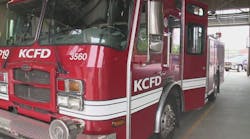In the July issue, we discussed ideas contributing to the foundation of a marketing strategy for a fire department or fire service organization. We concentrated on the initial approach to creating an effective strategic marketing plan. This month, we will define our terms and discuss how to create the team with the responsibility for developing the plan.
First, we need to get very basic. This means defining our terms. I tend to use the terms marketing and public affairs interchangeably, but it depends on your audience. This is as important internally as externally, especially when you form the team that will create the plan. If you use the word marketing, define it as it applies to a public service. This means differentiating it from a profit-making entity. In my opinion, marketing refers to a more comprehensive plan that includes public affairs as a key tactic. However, when discussing the plan in a public forum or presenting it to organizations outside the department, you may want to use the term public affairs plan.
There is no question that the fire service has embraced the idea of marketing and understands its need and uses, but there is still a perception that marketing refers to sales and advertising used to generate revenue. This could appear to some people to be confusing, self-serving and unnecessary for a public service. Fortunately, most government and non-profit organizations include marketing as a critical and integral mechanism to achieve the organization's mission. Also, the pervasiveness of marketing in our society has contributed to the community's understanding that a public service needs marketing just like any other service if its voice is going to be heard. But, it still pays to be sensitive to any negative perceptions of marketing's application to pubic service. Simply stated, the purpose of the marketing plan is to create a balance between the department's mission and the needs of the community.
Creating The Team
In a fire department, the marketing team is the single most important aspect of the plan. That is because we work in teams in the fire service. We all rise and fall, live and die, and achieve success or failure together. This is different than many other kinds of endeavors. The same kind of team orientation applies to the creation of a marketing plan because its success determines whether we continue to serve the community as firefighters. The composition of the team will determine the success of the plan.
First, the fire chief must be convinced of the critical need and contribution of marketing to the department's mission. If the chief doesn't see it clear enough to initiate the creation of the plan, it may be an uphill battle. This doesn't mean that it can't be done. There are many chiefs who may not understand the mechanics of marketing, but who surround themselves with great officers and firefighters who do see it. These chiefs listen to their people, giving them plenty of rope. This comes from the chief's confidence in their actions and their intelligence. Many of the accredited departments fall into this category. If the chief is lukewarm to the idea of a marketing plan, you will have one hand tied behind your back.
I can tell if a chief is a long-range thinker vis-Ã -vis marketing within 10 minutes of meeting him (I say "him" because every female chief I have ever met understood marketing's contribution within a nanosecond. They just "get it."). In my experience, chiefs have two diverging views on marketing. First, there are what I call the "back steppers," referring to chiefs who came up through the ranks riding the back steps of rigs (like many of us) before safety standards made riding on the back step a relic of the past. That's my point. In terms of understanding marketing's contribution, they are still on that back step. Don't get me wrong, these men are usually excellent operations chiefs and run very good departments. As I said to one of them a few months ago when he questioned the idea of marketing, "Who knows, maybe you're right. Why would you need marketing?"
The fact is with this particular very large department there were so many amazing things going on there that the public did not know about it would boggle the mind. This is a chief who looks ahead in delivering services to his constituency. But, there is a difference between looking ahead and looking forward. The former denotes linear thinking; the latter defines a strategic view.
As long as things are going well, I suppose, there's no need to consider marketing. The question is: What does "going well" really mean? What new heights and standards could that department achieve? How much more support could the department gain if the public did know, and how much could the public benefit? This department could be in a vulnerable position if things change in the public's perception, especially if it has to do with financial belt-tightening or some political hot potato like diversity. As we all know, things do change fast these days.
A growing number of fire officers and chiefs may be called "the progressives." They see marketing as an integral part of the strategic development of the department's place in the community. Here is an example you will relate to if you have been fortunate enough to know Chief Alan Brunacini of the Phoenix Fire Department.
About a dozen years ago while I was in Phoenix, Chief Brunacini invited me to lunch at his favorite Mexican restaurant. There we were with the chief in one of his flowered Hawaiian shirts and me in a pin-striped suit, all dressed up with no place to go and trying to appear intelligent. Earlier that day, I had been pontificating about my marketing theories to a person who knew more about marketing (and most other things) than I ever would know in two lifetimes. He drew a big circle on a cocktail napkin, creating a perfectly drawn pie chart with all of the key components of the department's mission: fire, EMS, etc. Then he added a fairly large slice to complete the pie called "non-emergency services." He looked up at me as he pierced the napkin, holding the pen like a dagger and pounding the table with a loud thud.
"Ben," he said, "I want the whole market! It's good for us and it's good for the community." Choking on my guacamole from this obvious insight, I decided to keep my mouth shut, shelve the marketing bull and listen to someone who knew exactly what he was talking about. Good lesson. I listened for the next two hours. That's what we call a progressive chief, and there are more of them. Long story short: It's best to have the complete support and leadership of the chief.
The Team Members
The team should include the public information officer (PIO). There are also two kinds of PIOs. There is the "line PIO." This is usually someone who is chosen to be a PIO on a rotating basis. Nothing wrong with this, but the PIO needs to be able to think much broader than just giving the facts to the press during an incident. This broad, strategic view usually comes with quite a bit of experience. Therefore, if you have a senior officer in a permanent "destination position" as a public affairs director (uniformed or civilian), you are probably better off. Naturally, this applies to large or midsize departments. As I have noted many times in this column, a good, progressive senior PIO is worth his or her weight in gold bars. If you have one of these kinds of PIO, he or she could be the lead on the marketing committee.
My former fire department in Woodinville, WA, now has a marketing liaison officer. If you are fortunate enough to have one of these, then, naturally he or she should be on the committee. You should have a public fire educator as well as the fire marshal or his or her deputy as well as an inspector. The office of the fire marshal usually has one of the best grasps on marketing in any department. The fire marshal's office functions in marketing mode most of the time in gaining compliance from business owners and institutions. Businesses and institutions (public buildings, schools, churches, etc.) comprise a large and important part of the market.
I would also suggest a battalion chief from operations and a deputy chief of administration. There should be someone from the administrative office who deals with the public every day, and finally, a lieutenant and one or two firefighters and EMTs who have an understanding of how the public views them when they are on calls or in non-emergency situations.
The team comprises about five to seven people. In jurisdictions where there is a higher educational institution or community college, you may want to enlist the help of students from the marketing department. They can be an amazing resource in terms of data collection and analysis as well as an understanding of marketing management.
Next: Components and Information for Marketing Command
BEN MAY, a Firehouse® contributing editor, has been developing the discipline of fire and emergency services marketing management for more than 15 years. He has been a firefighter for Montgomery County, MD, Fire and Rescue and fire commissioner for the Woodinville, WA, Fire and Life Safety District. May holds a bachelor's degree in public affairs from the University of Oklahoma and a master's degree in international communication from the American University in Washington, D.C. He has been a vice president of two international marketing firms over the last 25 years, and now is responsible for business development for Epcot at Walt Disney World Resort.





